2017-09-28 - Nº 126
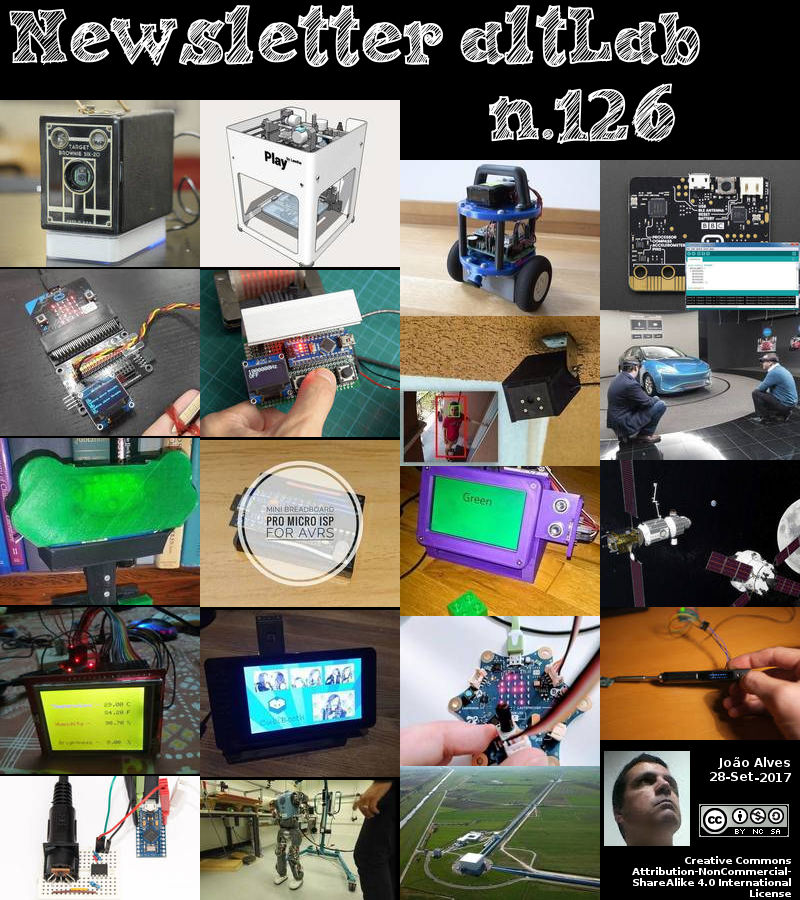
Editorial
Esta é a Newsletter Nº 126 que se apresenta com o mesmo formato que as anteriores. Se gostar da Newsletter partilhe-a!
Todas as Newsletters encontram-se indexadas no link.
Esta Newsletter tem os seguintes tópicos:
Faz hoje anos que nascia, em 1698, Pierre Louis Maupertuis. Este matemático e filósofo francês ficou conhecido na história por ter inventado o princípio da menor acção também conhecido por princípio de Maupertuis - uma equação integral que determina o caminho seguido por um sistema físico. . Faz também anos hoje que nascia, em 1852, Henri Moissan. Este químico francês ficou conhecido pelo seu trabalho no isolamento do flúor dos seus compostos. Este isolamento foi possível através da electrólise de uma solução de fluoreto de potássio em ácido fluorídrico. Foi também ele que desenvolveu o forno para produção industrial de acetileno.
Faz também anos que nascia, em 1860, Paul Ulrich Villard. Este químico e físico francês foi responsável pela descoberta dos raios gama. Ele estava a estudar as radiações de sais de urânio descobertos por Henri Becquerel quatro anos antes. As partículas carregadas cujos caminhos estavam dobrados num campo magnético eram conhecidas, mas Villard encontrou uma forma de radiação penetrante que não se desviou, mas chamou pouca atenção de cientistas contemporâneos.
Por fim faz anos hoje que nascia, em 1925, Seymour Cray. Este engenheiro electrotécnico norte-americano foi pioneiro no uso de transístores em computadores e depois desenvolveu supercomputadores maciços para gerir redes de informações empresariais e governamentais. Ele era o proeminente criador dos grandes computadores de alta velocidade conhecidos como supercomputadores. Considerado o pai dos supercomputadores, Cray e a sua companhia lançam em 1976 o Cray-1, um supercomputador onde tudo no computador era rápido, não apenas o processador. Este foi o primeiro supercomputador a implementar o desenho de processadores vector (também designados por array processor).
Na semana que passou a nave espacial Osiris-Rex usou a força gravítica da Terra para se lançar no caminho do asteriode Bennu. A nave espacial esteve a cerca de 17 mil quilómetros da Antartida antes de seguir uma rota para norte por cima do oceano Pacifico. A manobra permitiu que a nave pudesse ganhar a velocidade necessária para mudar a sua orbita.
Após cerca de um ano de trabalhos ficou finalmente concluída uma nova ligação entre a Virginia nos Estados Unidos e Bilbau em Espanha por cabo submarino. Esta infra-estrutura designada por Marea foi subsidiada pela Microsoft e pelo Facebook e será operada pela Telxius. Com mais de 6600 quilómetros e pesando cerca de 4.65 milhões de quilos pode transmitir mais de 160 terabits de informação por segundo.
Também esta semana, o computador Spaceborne da HPE foi ligado a bordo da estação espacial internacional. O Spaceborne é o primeiro sistema de computador comercial de alta performance (COTS) com um teraFLOP na Estação Espacial Internacional.
Na Newsletter desta semana apresentamos diversos projetos de maker assim como um modelo 3D que poderá ser útil. É apresentada a revista MagPI Nº62.
 João Alves ([email protected])
João Alves ([email protected])
O conteúdo da Newsletter encontra-se sob a licença  Creative Commons Attribution-NonCommercial-ShareAlike 4.0 International License.
Creative Commons Attribution-NonCommercial-ShareAlike 4.0 International License.
Novidades da Semana
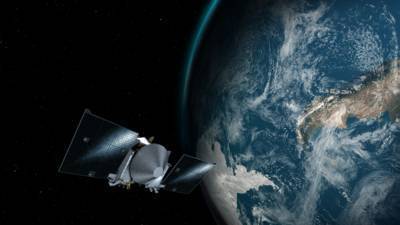
NASA’S OSIRIS-REx Spacecraft Slingshots Past Earth
_"NASA’s asteroid sample return spacecraft successfully used Earth’s gravity on Friday to slingshot itself on a path toward the asteroid Bennu, for a rendezvous next August. At 12:52 p.m. EDT on Sept. 22, the OSIRIS-REx (Origins, Spectral Interpretation, Resource Identification, and Security – Regolith Explorer) spacecraft came within 10,711 miles (17,237 km) of Antarctica, just south of Cape Horn, Chile, before following a route north over the Pacific Ocean. OSIRIS-REx launched from Cape Canaveral Air Force Station in Florida on Sept. 8, 2016, on an Atlas V 411 rocket. Although the rocket provided the spacecraft with the all the momentum required to propel it forward to Bennu, OSIRIS-REx needed an extra boost from the Earth’s gravity to change its orbital plane. Bennu’s orbit around the Sun is tilted six degrees from Earth’s orbit, and this maneuver changed the spacecraft’s direction to put it on the path toward Bennu. As a result of the flyby, the velocity change to the spacecraft was 8,451 miles per hour (3.778 kilometers per second). [...]

Celebrating the completion of the most advanced subsea cable across the Atlantic
_"When it comes to computing, speed matters. So does resiliency. Today, we’re proud to announce the completion of the Marea subsea cable, which is unmatched in its capabilities. Spanish for tide, Marea is a joint project between Microsoft, Facebook and global telecommunication infrastructure company Telxius, that helps to upgrade the global internet infrastructure to better meet the rapidly growing demand for internet and cloud services in our increasingly connected world. Lying more than 17,000 feet below the ocean’s surface, Marea is the most technologically advanced subsea cable to cross the Atlantic Ocean, and the first cable to connect Virginia and Spain, landing in Virginia Beach and Bilbao. The value of partnering for success Recognizing a need for greater resiliency for networks across the Atlantic, Microsoft, Facebook and Telxius pursued the creation of Marea along a route south of existing transatlantic cable systems. [...]
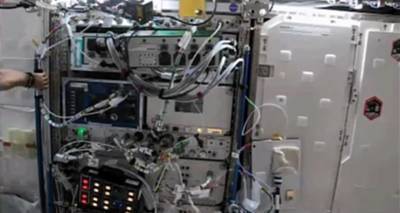
HPE’s Spaceborne Computer Successfully Powers Up in Space and Achieves One TeraFLOP
_"It’s been one month since the SpaceX CRS-12 rocket launched from the Kennedy Space Center in Florida on August 14, sending HPE’s Spaceborne Computer to the International Space Station (ISS). It has been a long month for us, HPE’s Spaceborne Computer engineers, as we waited for an update from NASA on when we would be scheduled to power on the system in space. With much of my team and one of NASA’s main command centers based in Houston, we have all been tied up with the aftermath of Hurricane Harvey. We finally received confirmation that all systems are a go for Thursday, September 14. The day arrives and my colleague, Dave Petersen, and I are anxious. It’s 5:00 A.M. [...]
Outras Notícias
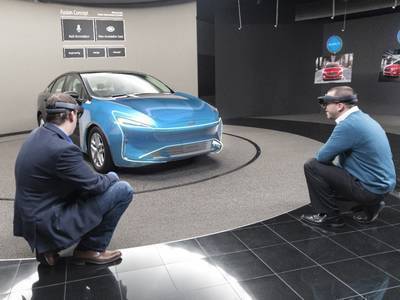
Make Way For Holograms: New Mixed Reality Technology Meets Car Design As Ford Tests Microsoft Hololens Globally
_"Ford is expanding testing of Microsoft HoloLens mixed reality technology globally to gain speed in designing more stylish vehicles for its customers New technology allows designers wearing wireless headsets to see several digital designs and parts as if these were already incorporated into a physical vehicle; this is helping Ford explore more design proposals while shaving time off design and engineering processes that can take years For example, evaluating a vehicle’s side mirror aesthetics and how that affects a driver’s view normally takes days or weeks, but can now be done in minutes, even seconds Ford designers have been swapping some clay-sculpting steels and rakes for mixed reality headsets and visualization software that can change vehicle design elements – side mirrors, grilles, vehicle interiors and more – in mere seconds. Designers have been piloting Microsoft HoloLens technology for a year now in Ford’s Dearborn studios, allowing them to see proposed virtual design elements as if these pieces were part of physical vehicles. They’ve been able to explore different shapes, sizes and textures of future vehicle attributes in minutes and hours instead of the weeks and months it can take to create clay models. And now, Ford is expanding this pioneering testing across the globe. “It’s amazing we can combine the old and the new – clay models and holograms – in a way that both saves time and allows designers to experiment and iterate quickly to dream up even more stylish, clever vehicles,” says Jim Holland, Ford vice president, vehicle component and systems engineering. “Microsoft HoloLens is a powerful tool for designers as we continue to reimagine vehicles and mobility experiences in fast-changing times.” HoloLens technology uses mixed reality, which enables designers to see holograms in photo-quality backdrops through wire-free headsets. [...]
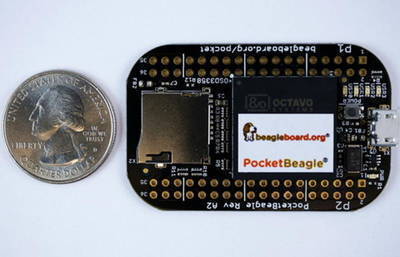
PocketBeagle
"What is PocketBeagle? PocketBeagle is an ultra-tiny-yet-complete open-source USB-key-fob computer. PocketBeagle features an incredible low cost, slick design and simple usage, making PocketBeagle the ideal development board for beginners and professionals alike. Processor: Octavo Systems OSD3358 1GHz ARM® Cortex-A8 - 512MB DDR3 RAM integrated - Integrated power management - 2×32-bit 200-MHz programmable real-time units (PRUs) - ARM Cortex-M3 Summary of Key Features - Low cost Linux computer with tremendous expansibility - Opportunity to learn many programming aspects from educators on-line - Openness and flexibility tear-down limits on your imagination Summary of Technical Specifications - Based on new Octavo Systems OSD3358-SM 21mm x 21mm system-in-package that includes 512MB DDR3 RAM, 1-GHz ARM Cortex-A8 CPU, 2x 200-MHz PRUs, ARM Cortex-M3, 3D accelerator, power/battery management and EEPROM - 72 expansion pin headers with power and battery I/Os, high-speed USB, 8 analog inputs, 44 digital I/Os and numerous digital interface peripherals - microUSB host/client and microSD connectors " [...]

Arduino Widens Wireless Offerings with Two New Boards
_"Today at World Maker Faire New York, Massimo Banzi took stage to unveil two new Arduino boards, the long-range radio (LoRa)-equipped MKR WAN 1300 and the cellular-capable MKR GSM 1400. The boards come in with the smaller MKR form factor that Arduino has been utilizing of late, measuring 67.64 x 25mm. The company says they also offer low power consumption, making them useful for applications such as environmental monitoring, tracking, agriculture, energy monitoring and home automation. Both boards use the Atmel SAM D21 microcontroller, featuring a 32-bit ARM Cortex-M0+ processor, 256KB Flash memory and 32KB SRAM.The MKR GSM 1400 provides global 2G and 3G connectivity via an integrated u-blox module. The MKR WAN 1300 features a Murata LoRa module and can be powered by AA or AAA batteries or an external 5V USB, and can switch between power sources. They’re both available for pre-order now. [...]

NASA Tests First 3-D Printed Rocket Engine Part Made with Two Different Alloys
_"Engineers at NASA's Marshall Space Flight Center in Huntsville, Alabama, tested NASA's first 3-D printed rocket engine prototype part made of two different metal alloys through an innovative advanced manufacturing process. NASA has been making and evaluating durable 3-D printed rocket parts made of one metal, but the technique of 3-D printing, or additive manufacturing, with more than one metal is more difficult. “It is a technological achievement to 3-D print and test rocket components made with two different alloys,” said Preston Jones, director of the Engineering Directorate at Marshall. “This process could reduce future rocket engine costs by up to a third and manufacturing time by 50 percent.” Engineers at Marshall, led by senior engineer Robin Osborne, of ERC, Inc. of Huntsville, Alabama, supporting Marshall's Engine Components Development and Technology branch, low-pressure hot-fire tested the prototype more than 30 times during July to demonstrate the functionality of the igniter. The prototype, built by a commercial vendor, was then cut up by University of Alabama in Huntsville researchers who examined images of the bi-metallic interface through a microscope. The results showed the two metals had inter-diffused, a phenomenon that helps create a strong bond. [...]
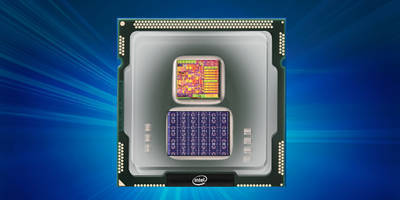
Intel’s New Self-Learning Chip Promises to Accelerate Artificial Intelligence
_"Imagine a future where complex decisions could be made faster and adapt over time. Where societal and industrial problems can be autonomously solved using learned experiences. It’s a future where first responders using image-recognition applications can analyze streetlight camera images and quickly solve missing or abducted person reports. It’s a future where stoplights automatically adjust their timing to sync with the flow of traffic, reducing gridlock and optimizing starts and stops. It’s a future where robots are more autonomous and performance efficiency is dramatically increased. An increasing need for collection, analysis and decision-making from highly dynamic and unstructured natural data is driving demand for compute that may outpace both classic CPU and GPU architectures. [...]
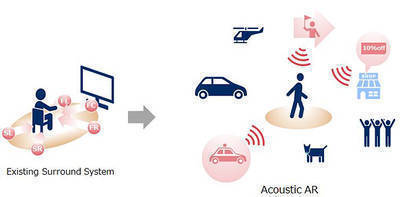
NEC device enables objects to "talk" to users
_" NEC Corporation (NEC; TSE: 6701) today announced the development of acoustic augmented reality (AR) technology that gives a "voice" to objects that can only be heard by users of specialized wireless earphones (hearable devices). These advanced devices also enable users to easily identify the direction and location that the voices originate from, making this technology ideal for marketing purposes and guide services. The technology wirelessly provides "stereophonic sound," a realistic sound field that virtually produces a three dimensional sense of direction and distance for a sound. Moreover, "sound localization" fixes the position of a sound, regardless of the facial orientation or direction a user is moving. This is accomplished by using nine axis motion sensors mounted on a hearable device. Possible applications for this technology include the creation of promotions, as well as navigation and guidance services that are customized for individual needs, such as posters in a facility that "talk" to users directly. [...]
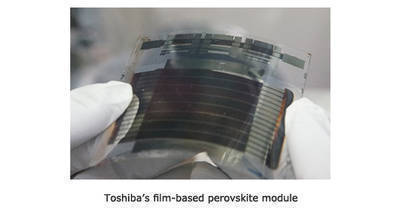
Toshiba Achieves World's Highest Conversion Efficiency in 5 cm X 5 cm Film-based Perovskite Solar Cell Mini-modules
_"Toshiba has made a significant advance toward the realization of light, flexible solar modules that can be used in diverse locations by fabricating a perovskite solar cell mini module(Note 2) with the highest energy conversion rate yet achieved. Perovskite solar cells have a light harvesting layer formed with crystals of a compoun with a perovskite structure. Such compounds are easily and cheaply manufactured, and offer good development potential in terms of energy efficiency. The main concerns are to increase cell size and to boost the energy conservation rate. Toshiba has achieved both by developing a 5-square centimeter cell that delivers an energy conversion efficiency of 10.5%(Note 1), the highest yet realized in a multi-cell mini module. Toshiba achieved this advance by developing a fabrication process technology for film-based perovskite solar cells. [...]
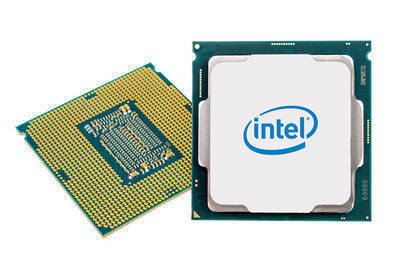
Intel Unveils the 8th Gen Intel Core Processor Family for Desktop, Featuring Intel’s Best Gaming Processor Ever
_"Intel today announced that its new family of 8th Gen Intel Core desktop processors will be available for purchase beginning Oct. 5, 2017. The new desktop processor family is built for gamers, content creators and overclockers who require premium performance. Ranging from Intel Core i3 to Intel Core i7, these processors deliver premium performance for what comes next, opening the door for a new level of faster, easier and more immersive experiences. This new family introduces the first-ever 6-core Intel Core i5 desktop processor and first-ever 4-core Intel Core i3 desktop processor. The family offers a wide range of performance options for consumers with unlocked1 “K” processors that deliver maximum tuning flexibility at each brand level and up to 40 platform PCIe 3.0 lanes for system expandability on graphics, storage and I/O. These processors are supported with new Intel Z370 chipset-based motherboards. [...]
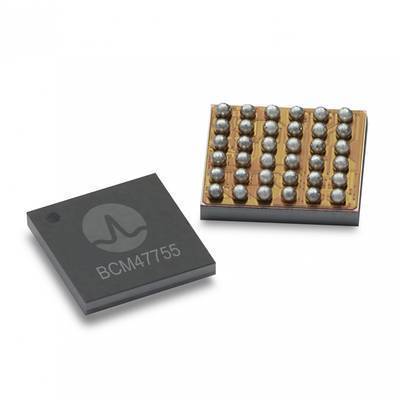
Broadcom Introduces World’s First Dual Frequency GNSS Receiver with Centimeter Accuracy for Consumer LBS Applications
_"Broadcom Limited (NASDAQ:AVGO), a leading designer, developer and global supplier of a broad range of digital and analog semiconductor connectivity solutions, today announced the world’s first mass-market, dual frequency GNSS receiver device, the BCM47755, designed to enhance location based services (LBS) applications for mobile phones, tablets and fitness wearables. Equipped with the latest GNSS innovations, the device is capable of centimeter accuracy with minimal power consumption and footprint, enabling an entirely new suite of high-precision LBS applications including lane-level vehicle navigation and mobile augmented reality (AR). Until now, mobile location based applications have been powered by single frequency GNSS receivers operating under stringent battery power and footprint constraints. The expanded availability of L1/E1 and L5/E5 frequencies in satellite constellations enables the use of two frequencies to compute position much more accurately in both urban and open area environments. The BCM47755 delivers this higher level of location accuracy while meeting the rigorous battery power and footprint needs in mobile phones. The BCM47755’s accuracy allows location-based applications to offer a richer consumer experience. [...]
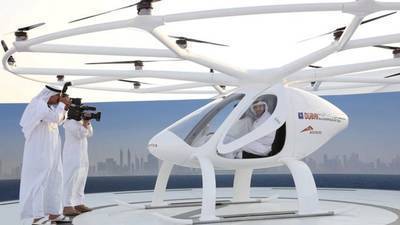
Dubai tests drone taxi service
_"Dubai has conducted its first test of a drone taxi service that it hopes will become a viable transportation system in the city. The two-seater, 18-rotor unmanned vehicle took off for a five-minute flight above a strip of sand on the Gulf coast. The flight was watched by Crown Prince Sheikh Hamdan bin Mohammed. Dubai has big ambitions for becoming a smart city, with drones and robots central to its plans. The drone was designed by German firm Volocopter and the firm said it hopes to have the taxis up and running within five years. "Implementation would see you using your smartphone, having an app, and ordering a Volocopter to the next Voloport near you," said chief executive Florian Reuter. [...]
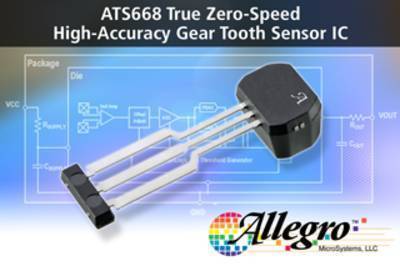
Allegro MicroSystems, LLC Announces a new Three-Wire Differential Speed Sensor Integrated Circuit
_"Allegro MicroSystems, LLC announces a new optimized Hall-effect three-wire differential speed sensor integrated circuit (IC) and permanent magnet pellet combination. Allegro’s ATS668 has integrated EMC protection components to provide a user-friendly solution for true zero-speed digital gear tooth sensing. It is offered in a small single over-mold package that can be easily assembled and used in conjunction with a wide variety of gear tooth sensing applications. The ATS668 is designed for automotive transmission systems making it also ideal for non-automotive applications such as recreational vehicles, industrial equipment, white goods, and exercise equipment. The device incorporates a dual element Hall IC that switches in response to differential magnetic signals created by a ferromagnetic target. The IC contains a sophisticated compensating circuit designed to eliminate the detrimental effects of magnet and system offsets. [...]

Microsoft announces quantum computing programming language
_"For more than a decade, a team of researchers, engineers and developers at Microsoft has been working on quantum computing, a new model of computing that promises exponential increases in processing power and could help scientists tackle questions previously considered unanswerable—on topics ranging from climate science and medical research, to the human genome and economics. For the first time, Microsoft is releasing a new programming language and computing simulator designed specifically for quantum computing. Microsoft CEO Satya Nadella made the announcement yesterday during his keynote at Microsoft Ignite, sharing how Microsoft’s team is bringing quantum computing one step closer to reality. Unlike a classical computer, in which binary digits, or “bits,” can hold only one value (a ‘1’ or a ‘0’) at a time, quantum computers are made up of quantum bits, or “qubits,” that have the potential to hold multiple values simultaneously. The challenge is in building enough qubits to reach critical mass of computational power, and in keeping them in a state of equilibrium where they’re working together and their power can be harnessed. (To learn more about the challenges and Microsoft’s unique approach to quantum computing, check out this Microsoft article and coverage of yesterday’s announcement in WIRED and Ars Technica.) [...]
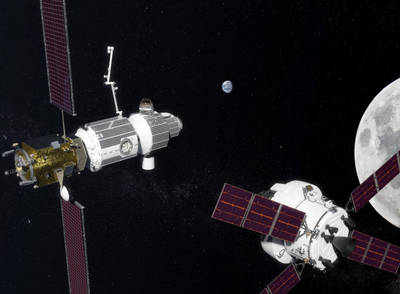
NASA, Roscosmos Sign Joint Statement on Researching, Exploring Deep Space
_"Building a strategic capability for advancing and sustaining human space exploration in the vicinity of the Moon will require the best from NASA, interested international partners, and U.S. industry. As NASA continues formulating the deep space gateway concept, the agency signed a joint statement with the Russian Space Agency, Roscosmos, on Wednesday, Sept. 27 at the 68th International Astronautical Congress in Adelaide, Australia. This joint statement reflects the common vision for human exploration that NASA and Roscosmos share. Both agencies, as well as other International Space Station partners, see the gateway as a strategic component of human space exploration architecture that warrants additional study. NASA has already engaged industry partners in gateway concept studies. Roscosmos and other space station partner agencies are preparing to do the same. [...]

Mbed OS 5.6 released: Focus on low power, connectivity and security
_"The Arm Mbed OS 5.6.0 release helps to further simplify the internet of things (IoT) and embedded product development with the addition of several new features, such as tickless RTOS scheduler support to enable long periods of low-power sleep and IPv6 support to cellular stack to provide enhanced web connectivity. The release also adds several new drivers and platform APIs, support for IAR Embedded Workbench v8.1 and hardware security enhancements. In addition, this release contains many minor fixes and enhancements and brings support for 93 target development boards. In the release note below, we summarize some of the key updates to Mbed OS as a part of Mbed OS 5.6.0 release. One additional change you may have noticed is developer.mbed.org is now os.mbed.com. We have updated our URL for consistency across the website. [...]
Ciência e Tecnologia
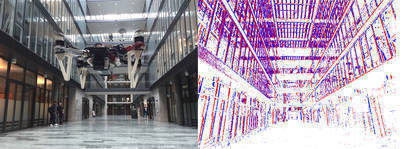
Drones can almost see in the dark
_"UZH researchers have taught drones how to fly using an eye-inspired camera, opening the door to them performing fast, agile maneuvers and flying in low-light environments. Possible applications could include supporting rescue teams with search missions at dusk or dawn. To fly safely, drones need to know their precise position and orientation in space at all times. While commercial drones solve this problem using GPS, this only works outdoors, and is not very reliable, especially in urban environments. Furthermore, the conventional cameras mounted on drones work only when there is a high amount of light available, and the drone’s speed has to be limited otherwise the resulting image is motion-blurred and cannot be used by computer vision algorithms. To solve this problem, professional drones use sensors that are elaborate, expensive, and bulky, such as laser scanners. [...]
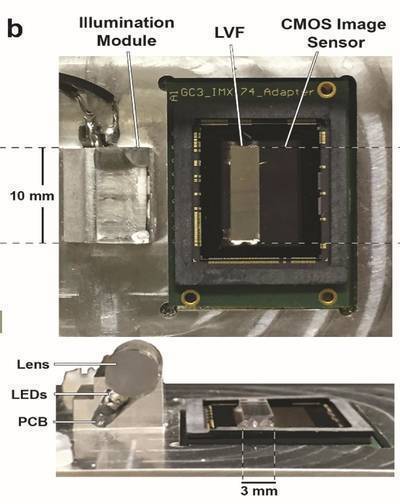
Illinois researchers develop spectroscopic "science camera" system for smartphone-enabled mobile health
_"The latest versions of most smartphones contain at least two and sometimes three built-in cameras. Researchers at the University of Illinois would like to sell mobile device manufactures on the idea of adding yet another image sensor as a built-in capability for health diagnostic, environmental monitoring, and general-purpose color sensing applications. Three years ago, the National Science Foundation provided a pair of University of Illinois professors with a grant to develop technology called “Lab-in-a-Smartphone.” Over that time, the research teams of Brian Cunningham, Donald Biggar Willett Professor of Engineering, and John Dallesasse, associate professor of electrical and computer engineering, have published papers detailing potential ways the mobile devices could provide health diagnostic tests and other measurements normally performed in a laboratory setting. Their latest efforts demonstrate that mobile devices incorporating their sensor can provide accurate measurements of optical absorption spectra of colored liquids or the optically scattered spectra of solid objects. In other words, a mobile device incorporating the lab-in-a-smartphone “science camera” could accurately read liquid-based or paper-based medical tests in which the end result is a material that changes from one color to another in the presence of a specific analyte. The team successfully demonstrated a very compact inexpensive system that performs optical spectroscopy in a form factor that can fit inside the body of a phone. [...]
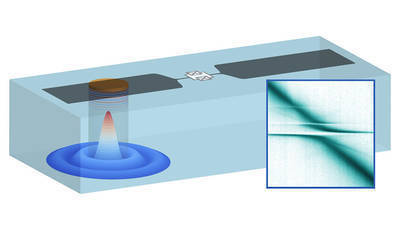
Quantum data takes a ride on sound waves
_"Yale scientists have created a simple-to-produce device that uses sound waves to store quantum information and convert it from one form to another, all inside a single, integrated chip. The device allows a superconducting artificial atom — a qubit — to exchange energy and quantum information with a high frequency bulk acoustic wave resonator (HBAR). The ability to manipulate and store fragile quantum data in a robust and easy-to-manufacture way is a crucial step in the development of quantum computing technology. The work is a collaboration at Yale between the labs of Robert Schoelkopf, the Sterling Professor of Applied Physics and Physics, and Peter Rakich, assistant professor of physics. Yiwen Chu, a postdoctoral associate in Schoelkopf’s lab, led the effort and is first author of a study that appears Sept. 21 in the online edition of the journal Science. Chu said the new device features a qubit made from superconducting aluminum and a mechanical resonator made with a sapphire wafer. [...]

How to apply an advanced non-stable semiconductor in nanoelectronics
_"A research group consisting of scientists from Tomsk Polytechnic University, Germany and Venezuela proved vulnerability of a two-dimensional semiconductor gallium selenide in air. This discovery will allow manufacturing nanoelectronics based on gallium selenide, which has never been previously achieved by any research team in the world. One of the promising areas of modern materials science is the study of two-dimensional (2D) materials, i.e. thin films consisting of one or several atomic layers. 2D materials due to their electrical superconductivity and strength could be a basis for modern nanoelectronics. Optic applications in nanoelectronics require advanced materials capable of ‘generating’ great electron fluxes upon light irradiation. [...]

Cornell Tech will help make computers ‘accountable’
_"If computers are going to run everything, we probably should keep an eye on how they do it. A nationwide team of computer scientists has launched a project to make automated decision-making systems “accountable,” ensuring they respect privacy and make decisions fairly. “There’s a lot of new technology being deployed in a variety of important settings, and we don’t fully understand all the ramifications,” said Thomas Ristenpart, associate professor of computer science at Cornell Tech. Ristenpart and Helen Nissenbaum, Cornell Tech professor of information science, will be co-principal investigators for the project, which also includes scientists at Carnegie Mellon University and the International Computer Science Institute in Berkeley, California. The work will be supported by a $3 million, five-year grant from the National Science Foundation (NSF). The interdisciplinary team of researchers combines the skills of experts in philosophy, ethics, machine learning, security and privacy. [...]

Ultra-Light Aluminum: USU Chemist Reports Material Design Breakthrough
_"If you drop an aluminum spoon in a sink full of water, the spoon will sink to the bottom. That’s because aluminum, in its conventional form, is denser than water says Utah State University chemist Alexander Boldyrev. But if you restructure the common household metal at the molecular level, as Boldyrev and colleagues did using computational modeling, you could produce an ultra-light crystalline form of aluminum that’s lighter than water. Boldyrev, along with scientists Iliya Getmanskii, Vitaliy Koval, Ruslan Minyaev and Vladimir Minkin of Southern Federal University in Rostov-on Don, Russia, published findings in the Sept. 18, 2017, online edition of The Journal of Physical Chemistry C. The team’s research is supported by the National Science Foundation and the Russian Ministry of Science and Education. “My colleagues’ approach to this challenge was very innovative,” says Boldyrev, professor in USU’s Department of Chemistry and Biochemistry. “They started with a known crystal lattice, in this case, a diamond, and substituted every carbon atom with an aluminum tetrahedron.” The team’s calculations confirmed such a structure is a new, metastable, lightweight form of crystal aluminum. [...]

Developing robots that can walk more naturally
_"For humans, it comes perfectly naturally. But walking on two legs is actually a complicated task, requiring several muscles to perform delicate balancing acts. That’s why, in spite of years of major technological advancements in the field, humanoid robots are still far from being able to get around easily and reliably. Engineers at EPFL’s Biorobotics Laboratory are testing new walking algoritms on a plateform called COMAN, short for COmpliant HuMANoid. This 95-cm-tall humanoid is designed specifically for studying walking – which is why it has no head. COMAN was developed under the EU AMARSi project and is being used by several research teams. [...]

Bringing signals into phase
_"How we use and generate electricity has changed dramatically over the past century yet the basic components that control its flow remain remarkably similar. Researchers at KAUST have now developed a novel type of component that could improve the performance of electrical circuits. Electronic circuitry is traditionally constructed from three primary elements; a resistor, a capacitor and an inductor. A sinusoidal electrical signal passing through these devices will change in signal strength, or amplitude, and the relative timing of the crest of the wave, known as its phase. A resistor will change amplitude only while a capacitor and an inductor can also change phase, but only by exactly one quarter of the length of the wave, or 90°. Components that could alter the phase of the electrical signal by a different amount would enable electrical circuits with more varied functionality. [...]

Graphene-based device greatly increases spin signals
_"Scientists supported by EU funding, have created a graphene-based device where electron spins can be injected and detected, with unprecedented efficiency and at room temperature. This opens up possibilities for the realisation of applications which use spin based logic and transistors. The research published in Nature Communications, outlines how the electron spins were achieved from the interplay between the blilayer of graphene and boron nitride, used in the device. The result is the increase of the spin signal a hundredfold, which renders it large enough to be used in real life applications. Spin injection and detection 'Spin' is a term used to describe the magnetic property of electrons, which can be detected as a magnetic field with either up and down orientations. The science of spintronics seeks to exploit this phenomenon, with one of the most common applications being for the storage, transportation and manipulation of information. [...]
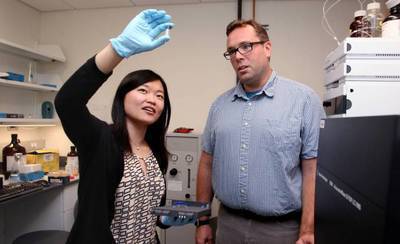
Scientists discover one of nature’s tiniest switches
_"If the advent of computers launched the Information Age, the ability to engineer tiny machines from molecules could define the coming decades. In a testament to the rapid advance of nanotechnology, the 2016 Nobel Prize in Chemistry was awarded to scientists who built the world’s first synthetic molecular machines by interlocking single molecules into devices capable of mechanical motion. Now, a discovery by Princeton University scientists, reported Aug. 2 in the Journal of the American Chemical Society, demonstrates that humans don’t have the monopoly on building the world’s tiniest machines. The Princeton researchers found a lasso-shaped bacterial molecule capable of altering its configuration when exposed to heat, a shape-changing ability akin to that used to operate certain synthetic molecular machines. The lasso is a type of molecular chain known as a peptide. “The discovery of this lasso peptide, which we named benenodin-1, demonstrates that we might look to biology as well as engineering for source material in developing molecular devices,” said A. James Link, an associate professor of chemical and biological engineering at Princeton who was the senior author on the paper. [...]
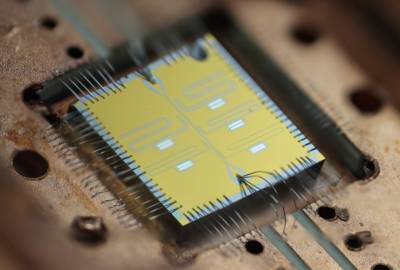
Quantum Computation to Tackle Fundamental Science Problems
_"For more than 50 years, Moore’s Law has reigned supreme. The observation that the number of transistors on a computer chip doubles roughly every two years has set the pace for our modern digital revolution—making smartphones, personal computers and current supercomputers possible. But Moore’s Law is slowing. And even if it wasn’t, some of the big problems that scientists need to tackle might be beyond the reach of conventional computers. For the past few years, researchers at Lawrence Berkeley National Laboratory (Berkeley Lab) have been exploring a drastically different kind of computing architecture based on quantum mechanics to solve some of science’s hardest problems. With Laboratory Directed Research and Development (LDRD) funding, they’ve developed quantum chemistry and optimization algorithms, as well as prototype superconducting quantum processors. [...]

Printed meds could reinvent pharmacies, drug research
_"A technology that can print pure, ultra-precise doses of drugs onto a wide variety of surfaces could one day enable on-site printing of custom-dosed medications at pharmacies, hospitals and other locations. The technique, which was developed at the University of Michigan, can print multiple medications into a single dose on a dissolvable strip, microneedle patch or other dosing device. The researchers say it could make life easier for patients who must now take multiple medications every day. The work could also accelerate drug development. Graduate student research assistant Siddharth Suresh Borsadia prints fluorescein crystals onto a cooled glass plate using organic vapor jet printing. By Levi Hutmacher, Michigan Engineering Graduate student research assistant Siddharth Suresh Borsadia prints fluorescein crystals onto a cooled glass plate using organic vapor jet printing. [...]

Goodbye, login. Hello, heart scan
_"Forget fingerprint computer identification or retinal scanning. A University at Buffalo-led team has developed a computer security system using the dimensions of your heart as your identifier. The system uses low-level Doppler radar to measure your heart, and then continually monitors your heart to make sure no one else has stepped in to run your computer. The technology is described in a paper that the inventors will present at next month’s 23rd Annual International Conference on Mobile Computing and Communication (MobiCom) in Utah. The system is a safe and potentially more effective alternative to passwords and other biometric identifiers, they say. It may eventually be used for smartphones and at airport screening barricades. [...]
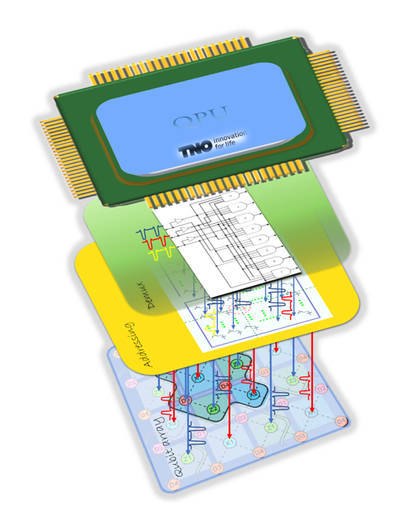
Innovative control system paves the way for large scale universal quantum computing
_"Future quantum computers promise exponential scaling in computing power with linearly increasing number of qubits. However, harnessing this power is challenging due to the complexity of controlling a large number of qubits simultaneously. A solution to this problem has been engineered by Richard Versluis, principal scientist at TNO, Leo DiCarlo, associate professor at TU Delft and postdoc Stefano Poletto with support of colleagues from TNO and TU Delft at QuTech and Intel. They invented a control methodology for fault-tolerant quantum computing based on a basic building block of eight qubits with a fixed set of control hardware. This basic building block can be reproduced to large arrays of qubits, without any increase or changes to the control hardware. With this new method, qubit error correction and logical operations, needed to execute complex algorithms on large scale quantum computers, are now made possible on any number of qubits. [...]

Gravitational waves from a binary black hole merger observed by LIGO and Virgo
_"The LIGO Scientific Collaboration and the Virgo collaboration report the first joint detection of gravitational waves with both the LIGO and Virgo detectors. This is the fourth announced detection of a binary black hole system and the first significant gravitational-wave signal recorded by the Virgo detector, and highlights the scientific potential of a three-detector network of gravitational-wave detectors. The three-detector observation was made on Aug. 14 at 10:30:43 UTC. The two Laser Interferometer Gravitational-wave Observatory (LIGO) detectors, located in Livingston, Louisiana, and Hanford, Washington, and funded by the National Science Foundation (NSF), and the Virgo detector, located near Pisa, Italy, detected a transient gravitational-wave signal produced by the coalescence of two stellar mass black holes. A paper about the event, known as GW170814, has been accepted for publication in the journal Physical Review Letters. The detected gravitational waves — ripples in space and time — were emitted during the final moments of the merger of two black holes with masses about 31 and 25 times the mass of the sun and located about 1.8 billion light years away. [...]
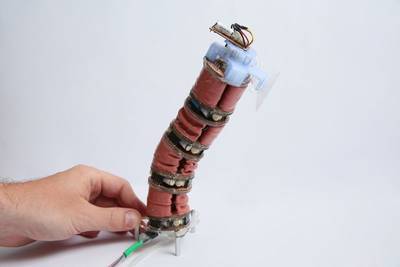
Vacuum-Powered Soft Robots
"We have developed a Vacuum-powered Soft Pneumatic Actuator (V-SPA) which leverages a single, shared vacuum power supply and enables complex soft robotic systems with multiple-DoF and diverse functions. In addition to actuation, other utilities enabled by vacuum pressure include gripping and stiffening through granular media jamming, as well as direct suction adhesion to smooth surfaces, for manipulation or vertical fixation. We investigated the performance of the new actuator through direct characterization of a 3-DoF, plug-and-play V-SPA Module built from multiple V-SPAs, and demonstrate the integration of different vacuum-enabled capabilities with a continuum-style robot platform outfitted with modular peripheral mechanisms. We show these different vacuum-powered modules can be combined to achieve a variety of tasks, including multi-modal locomotion, object manipulation, and stiffness tuning to illustrate the utility and viability of vacuum as a singular alternative power source for soft pneumatic robots, and not just a peripheral feature in itself. Our results highlight the effectiveness of V-SPAs in providing core soft robot capabilities and facilitating the consolidation of previously disparate subsystems for actuation and various specialized tasks, conducive to improving the compact design efficiency of larger, more complex multi-functional soft robotic systems. " [...]

Artificial intelligence for obtaining chemical fingerprints
_"Researchers at the Universities of Vienna and Göttingen have succeeded in developing a method for predicting molecular infrared spectra based on artificial intelligence. These chemical "fingerprints" could only be simulated by common prediction techniques for small molecules in high quality. With the help of the new technology, which is based on neuronal networks similar to the human brain and is therefore capable of learning, the team led by Philipp Marquetand from the Faculty of Chemistry at the University of Vienna was able to carry out simulations that were previously not possible. The potential of this new strategy has now been published in the current issue of the journal "Chemical Science". Drastic advances in research of artificial intelligence have led to a wide range of fascinating developments in this area over the last decade. Autonomously driven cars, but also everyday applications such as search engines and spam filters illustrate the versatility of methods from the field of artificial intelligence. [...]
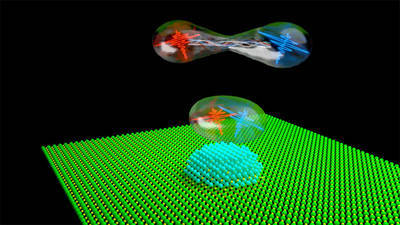
Quantum Communications Bend to Our Needs
_" The potential for photon entanglement in quantum computing and communications has been known for decades. One of the issues impeding its immediate application is the fact that many photon entanglement platforms do not operate within the range used by most forms of telecommunication. An international team of researchers has started to unravel the mysteries of entangled photons, demonstrating a new nanoscale technique that uses semiconductor quantum dots to bend photons to the wavelengths used by today’s popular C-band standards. They report their work this week in Applied Physics Letters, from AIP Publishing. “We have demonstrated the emission of polarization-entangled photons from a quantum dot at 1550 nanometers for the first time ever,” said Simone Luca Portalupi, one of the work's authors and a senior scientist at the Institute of Semiconductor Optics and Functional Interfaces at the University of Stuttgart. “We are now on the wavelength that can actually carry quantum communication over long distances with existing telecommunication technology.” The researchers used quantum dots created from an indium arsenide and gallium arsenide platform, producing pure single photons and entangled photons. [...]
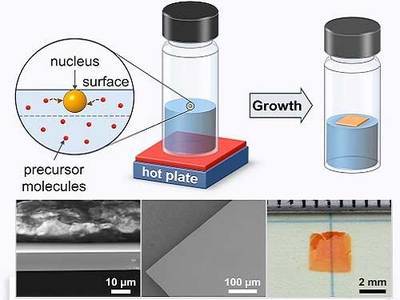
A little tension yields enormous solar crystals
_"In the race to replace silicon in low-cost solar cells, semiconductors known as metal halide perovskites are favored because they can be solution-processed into thin films with excellent photovoltaic efficiency. A collaboration between KAUST and Oxford University researchers has now uncovered a strategy that grows perovskites into centimeter-scale, highly pure crystals thanks to the effect of surface tension. In their natural state, perovskites have difficultly moving solar-generated electricity because they crystallize with randomly oriented grains. Osman Bakr from KAUST’s Solar Center and coworkers are working on ways to dramatically speed up the flow of these charge carriers using inverse temperature crystallization (ITC). This technique uses special organic liquids and thermal energy to force perovskites to solidify into structures resembling single crystals—the optimal arrangements for device purposes. While ITC produces high-quality perovskites far faster than conventional chemical methods, the curious mechanisms that initiate crystallization in hot organic liquids are poorly understood. [...]

“Superhero” robot wears different outfits for different tasks
_"From butterflies that sprout wings to hermit crabs that switch their shells, many animals must adapt their exterior features in order to survive. While humans don’t undergo that kind of metamorphosis, we often try to create functional objects that are similarly adaptive — including our robots. Despite what you might have seen in “Transformers” movies, though, today’s robots are still pretty inflexible. Each of their parts usually has a fixed structure and a single defined purpose, making it difficult for them to perform a wide variety of actions. Researchers from MIT’s Computer Science and Artificial Intelligence Laboratory (CSAIL) are aiming to change that with a new shape-shifting robot that’s something of a superhero: It can transform itself with different “outfits” that allow it to perform different tasks. Dubbed “Primer,” the cube-shaped robot can be controlled via magnets to make it walk, roll, sail, and glide. [...]

Holograms for molecules
_"Scientists at ETH Zurich and Roche have developed a completely new method for the analysis of molecules in liquids on a chip. The possible applications of this technology are immense. It has the potential, inter alia, to revolutionise medical diagnostics. Much can be detected in blood or urine: viral illnesses, metabolic disorders or autoimmune diseases can be diagnosed with laboratory tests, for instance. But such examinations often take a few hours and are quite complex, which is why doctors hand the samples over to specialist laboratories. Scientists at ETH Zurich and the company Roche have jointly developed a completely new analysis method based on light diffraction on molecules on a small chip. [...]

Case Western Reserve University researchers design soft, flexible origami-inspired robot
_"A Case Western Reserve University researcher has turned the origami she enjoyed as a child into a patent-pending soft robot that may one day be used on an assembly line, in surgery or even outer space. Kiju Lee, the Nord Distinguished Assistant Professor of Mechanical and Aerospace Engineering, and her lab have moved from paper robots to 3-D-printed models that bend, contract, extend and twist. This novel mechanism is called TWISTER (TWISted TowEr Robot). TWISTER was inspired by an origami twisted tower originally designed by Japanese artist Mihoko Tachibana, which uses multiple origami segments to form a tower structure. This origami design was then reinvented for various potential applications in robotics and manufacturing. In her earlier work using paper-folded structures, Lee’s team added three small versions of the towers to one end of the larger tower and manipulated them to grasp like three opposing fingers. [...]
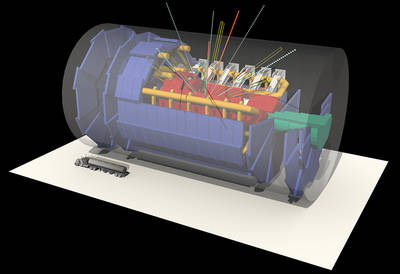
ALCF supercomputers help address LHC’s growing computing needs
_"Particle collision experiments at CERN’s Large Hadron Collider (LHC)—the world’s largest particle accelerator—will generate around 50 petabytes (50 million gigabytes) of data this year that must be processed and analyzed to aid in the facility’s search for new physics discoveries. That already-massive amount of data is expected to grow significantly when CERN transitions to the High-Luminosity LHC, a facility upgrade being carried out now for operations planned in 2026. “With the High-Luminosity LHC, we’re expecting 20 times the data that are produced by today’s LHC runs,” said Taylor Childers, a physicist at the U.S. Department of Energy’s (DOE) Argonne National Laboratory and a member of the ATLAS experiment, one of the four particle detectors at the LHC. “Based on our best estimates, we’ll need about a factor of 10 increase in computing resources to handle the increased amount of data.” Childers is part of a team exploring the use of supercomputers at the Argonne Leadership Computing Facility (ALCF), a DOE Office of Science User Facility, to help meet the LHC’s growing computing demands. His collaborators include Argonne physicist Thomas LeCompte, ALCF computer scientist Tom Uram, and Duke University researcher Doug Benjamin. Since 2002, scientists at the LHC, located on the border of France and Switzerland, have relied on the Worldwide LHC Computing Grid for all their data processing and simulation needs. [...]
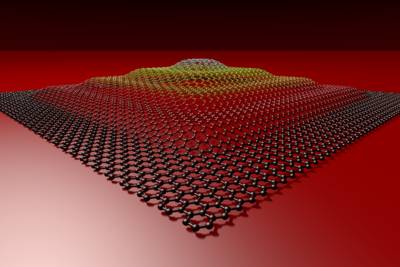
Graphene forged into three-dimensional shapes
_"Researchers from Finland and Taiwan have discovered how graphene, a single-atom-thin layer of carbon, can be forged into three-dimensional objects by using laser light. A striking illustration was provided when the researchers fabricated a pyramid with a height of 60 nm, which is about 200 times larger than the thickness of a graphene sheet. The pyramid was so small that it would easily fit on a single strand of hair. The research was supported by the Academy of Finland and the Ministry of Science and Technology of the Republic of China. Graphene is a close relative to graphite, which consists of millions of layers of graphene and can be found in common pencil tips. After graphene was first isolated in 2004, researchers have learned to routinely produce and handle it. [...]
Modelos 3D
Com a disponibilidade de ferramentas que permitem dar azo a nossa imaginação na criação de peças 3D e espaços como o thingiverse para as publicar, esta rubrica apresenta alguns modelos selecionados que poderão ser úteis.

DNA Playset
_"For this Valentine's Day: a DNA playset. This'll probably only go over well if your significant other is a biologist. But, hey, reproduction is sexy, right? Thanks to Wikipedia and the hard work of many scientists to measure tiny molecules, this is an accurate 35,000,000:1 scale model of DNA. It's a playset because you print out copies of the four nucleotides (A, T, G, and C) and snap them together into whatever sequence you like. Instructions The nucleotides are intended to be printed out as perimeters only, so turn off the fill plugin. [...]
Documentação
A documentação é parte essencial do processo de aprendizagem e a Internet além de artigos interessantes de explorar também tem alguma documentação em formato PDF interessante de ler. Todos os links aqui apresentados são para conteúdo disponibilizado livremente pelo editor do livro.
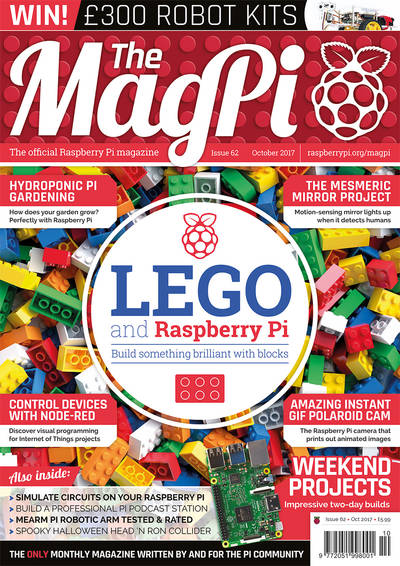
The MagPI 62
"We love LEGO here at The MagPi. In fact, there’s a lot about LEGO and Raspberry Pi that are similar. Both are creative, educational but fun, and great for making stuff. This month we’ve got a huge feature on using Raspberry Pi and LEGO together in your projects. Read all about it in issue 62 of The MagPi – The Official Raspberry Pi magazine, out in stores today! " [...]
Projetos Maker
Diversos Projetos interessantes.

Voice Activated Home Automation
_"I was thinking about writing an instructable, since last year though i read instructable daily on instructables.com. So, here is my first attempt i hope that you all appreciate my efforts. I am a B.Tech final year student of ECE department. It's a project based on the day to day need of people. Using this system, anyone can control four appliances through human voice from a mobile. It's a very affordable home automation system. [...]

Simple $10 Crypto Currency Display
_"Hello Everyone!Want a fun way to track the prices of crypto currencies? Tired of checking the prices online? Why not get a device to do it for you! In this Instructable I will show you how to build a device that connects directly to your WiFi and displays the latest price for multiple different crypto currencies. This device uses a library I wrote to interact with the CoinMarketCap.com Api. I've designed this project to be as simple as possible, so you don't need to know how to solder or code, I will go through everything you need to build the device. [...]
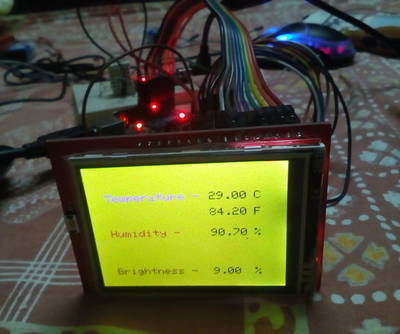
LCD Weather Monitor
"We are always fascinated with a display that shows some information like weather, status or anything which is to be monitored. So today I will use this TFT LCD display along with arduino for displaying weather and brightness. You can print anything on the display. As an example I have chosen weather info.So let build it. " [...]
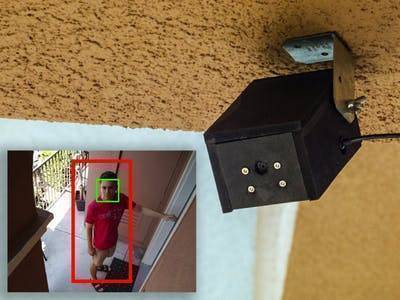
Smart Security Camera
_"IoT Raspberry Pi security camera running OpenCV for object detection. The camera will send an email with an image of any objects it detects. Check out this video to see a summary of the build steps and the completed camera: Building the Housing The housing consists of two components made from 1/4" (really 0.22" - 0.23") medium density fiber (MDF) board. A bottom portion holds the camera and Raspberry Pi Zero in place, and a top portion attaches to the mounting bracket. We drew out some basic designs with a few holes to mount the components. Schematics of the upper and lower portions of the housing with exact dimensions can be found in the "Schematics" section, but you may want to vary your dimensions based on the parts and hardware available to you. [...]
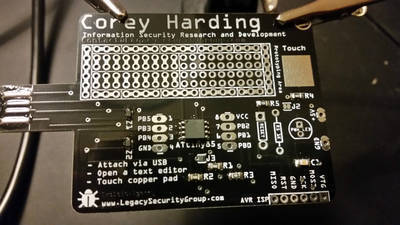
Open Source PCB "Business Card"
_"My business card is an ATtiny85 dev board the size of a credit card. Types out my contact info when a capacitive touch sensor is activated. Primarily designed to be used a Business Card/Resume/Portfolio, it is an ATtiny85 dev board in a credit card sized form factor. PCB files in Fritzing, so easy anyone can modify them for personal use. The demo app types out contact info when capacitive touch sensor is activated. This can be easily changed though as the micronucleus bootloader is used and the device can be programmed in the Arduino IDE as a Digispark. [...]
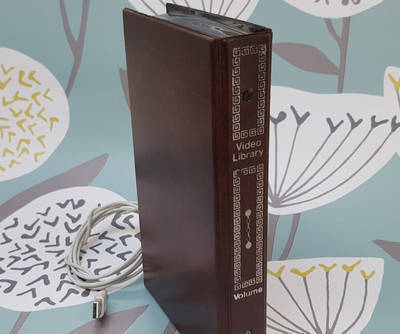
VHS Library Pi Security Camera
"This is an old VHS Video Library case that's now providing a perfect home for a Raspberry Pi security camera. The case contains a Pi Zero and the camera peeps out through the spine of the fake book. It's a really simple build with an old-world look and a practical modern purpose! " [...]
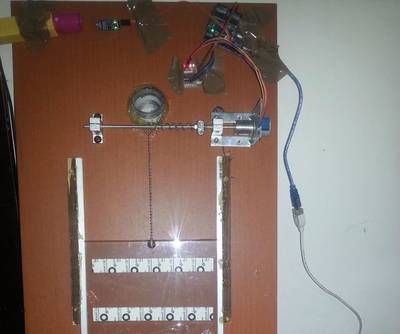
Automatic CHICKEN DOOR Dirt Cheap
"My goal was to make automatic chicken door as cheaply as possible. In metric. Things used: [please check if it matches, i bought these things a long time ago] -2x bearing holder or rail support; inner diameter 10mm-2x bearing MR105 inner diameter 5mm*10mm-M5 rod-6X M5 nuts-shaft coupler 5mm 5mm-sink chain; L at least 400mm -polycarbonate 210X300 -stepper motor 28BYJ-48-2x L profile as stepper motor holder-2*650mm alu profile for sliding, edges at 90degrees-photoresistor sensor module-some wires with female headers-Arduino UNO-some screws-a board " [...]
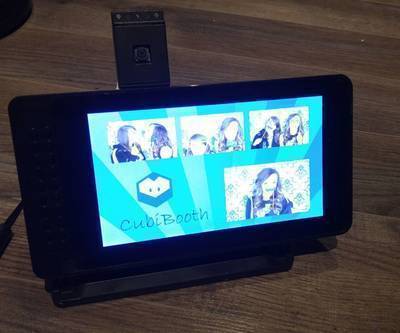
Yet Another Raspberry Pi Photo Booth
"Recently, my company (cubitux) had the opportunity to participate to a contest to present a photo booth solution to a client. Because I'm an open-source fan, I picked Raspberry Pi technology and started creating something around it. ------------------ Everything runs with a customized Raspbian - Desktop Edition (Special Linux flavor for Raspberry Pi)An already made SD card image is available on the following GitHub repository: https://github.com/phenelle/RPi_Photoboth/tree/ma... ------------------ However, this guide will show all the steps that we did to customize our Raspbian and make it very close to an embedded system..." [...]
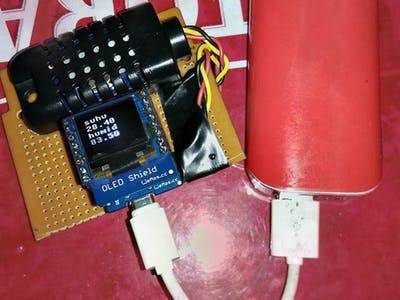
Mydevice cayenne MQTT support for esp8266
_"adding mqtt support for mydevice cayenne service to esp8266 based development board By Hendra Kusumah. Mydevice cayennes recently made a contest in hackster.io regarding their support for the esp8266 board. Then I want to try their service and use my wemos d1 mini to connect to their IoT server/dashboard. And I find it a little difficult to follow along their documentation about esp8266. and there are no exact explanation about using Mqtt for the esp8266. This tutorial will cover on how to getting started using mqtt service for the esp8266 by using Arduino IDE. [...]

Potentiometer Feedback Control: Implementing a Soft Extend Limit
_"In this Instructable we will be debriefing the method of setting a soft extension limit for actuators with potentiometer feedback. After completing this tutorial you will be able to successfully control the fully extended position of a linear actuator. All programming will be completed in the Arduino IDE. For this tutorial we will be using the following components: 1 x Arduino Micro 1 x WASP Motor Driver 1 x Momentary 3-Position Rocker Switch 1 x Tactile Pushbutton 1 x Small Breadboard 1 x Power Supply Before we get started, please note the following risks and limitations risks associated with setting a soft limit: 1. The saved extended limit is reset to the original full extension limit once the Arduino loses power/reset. 2. [...]

Mini balancing robot
"This is my version of a small self-balancing robot. A have tried to keep the design as simple and cheap as possible, without compromising performance. The robot uses two NEMA14 stepper motors and the electronics consists of a single Arduino Pro Micro and a MPU-6050 gyro/accelerometer breakout board. Two A4988 stepper drivers are used to drive the motors. The mechanical construction of the entire robot is made up of several 3D printed parts that are screwed together with M3 screws, this makes it fast and easy to assemble. " [...]
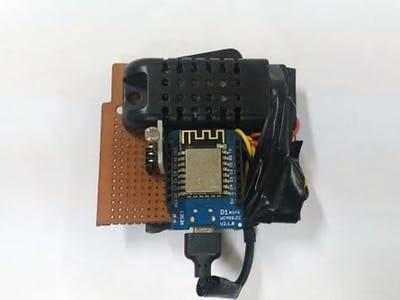
Room Monitor Throwie
_"A small and portable Temperature, humidity, and light monitor that can be placed instantly anytime. Background Story A problem that I want to solve by creating this project is the building maintenance system at my workplace still need to check manually and we have more than 30 rooms that need to be check twice a day by one or two cleaning employee. That could be tedious cleaning employee that do the room checking just needed 3 parameter to be checked: Does the Air Conditioner Turned On or Off Does the Light Turned On or Off Is the room temperature and humidity fit enough for people to get comfortable The building has 24/7 Wifi that has the same SSID and connected to internet, which got me thinking to make a device to make the cleaning employee's job lighter, so they can monitor every room anytime with any device and they only come to the room to turned on/off the AC and light.The building already has its own cable system with 4 available wall plug and to make a new device embedded on the wall could cost much more money, so the approach for making this device is this device needs to be portable could be plug directly to a wall socket or can run on its own power for a long period of time. The Hardware Build To build this device I choose to use a wemos d1 mini as the Brain because its small form factor. For reading the temperature and humidity I choose DHT22 because it is more reliable then the DHT11 sensor. And to read the room's light I use a basic LDR sensor because I just need to know if the light is turned on or off. [...]
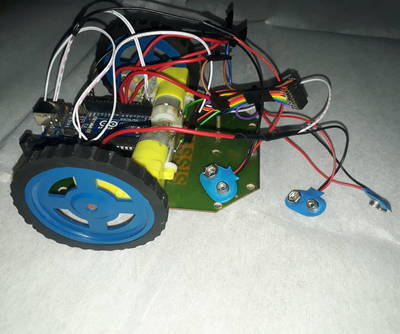
Bluetooth Controlled Robot Using Android Mobile
"In this project, we will show you how to make a Bluetooth controlled robot in a simple way and low cost. " [...]

Proximity Sensor for Arduino MCU Using 555 Timer IC
_"Hi friend I'm Aravind Chowdary and today we're going look into the building of an IR proximity sensor. Let's get started!After setting upyour robots motors and letting it run, one of the first thingsyoull realize, is that most likely it will run straight into a wall.How do get your robot to detect obstacles, you may wonder. Well, there area number of different solutions for this problem, such as radar, sonar(sometimes SODAR in air), bump switches, and one of the most widely usedsolutions, Infrared obstacle detection. This type of sensor is called aproximity sensor, because it can only detect if an obstacle is withinor without a set range. If your application needs an actual distancereturned, then you probably should use sonar or DIRRS (digitalinfrared rangefinding system). An infrared proximity detector (IRPD),works by illuminating in front of the robot with infrared light, thistype of light is invisible to the human eye, but your home camcordercan see this type of light quite well. [...]
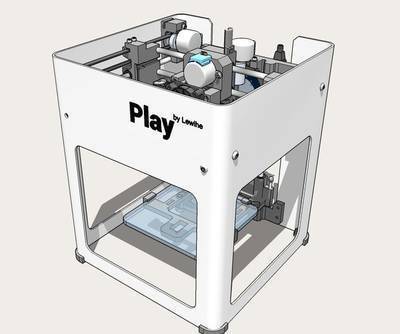
Play 3D LC - 139 DIY 3D Printer
_"Hello. I'm going to show you how to build a 3D printer for less than 139. This is the Low Cost version of the popular Lewihe Play 3D printer The printer mounts 28BYJ48 motors and Ramps 1.4 electronics. All components (including chassis) can be found in the market for less than 139. Specs: Print size: 90 x 90 x 110 mm. Print speed: 30 mm/s Resolution: 0.16 mm. [...]
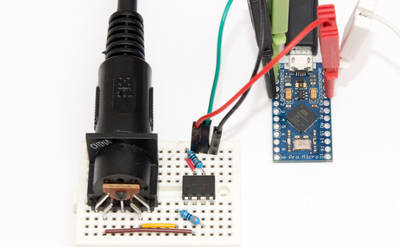
$5 USB MIDI adapter with ATmega32u4
"This article will detail how to build a USB MIDI adapter (one-directional: you connect the adapter with USB cable to your computer, and it receives notes and pedal data from your keyboard’s MIDI OUT and transmits them to your computer) with ATmega32u4, 6N137 optocoupler, a few resistors and spare MIDI connector or cable. Read on for details! " [...]
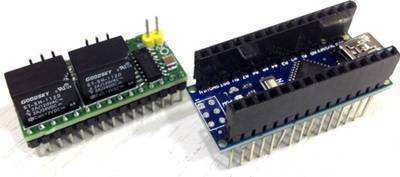
2 Channel Relay Shield for Arduino Nano
_"2 Channel Mini easy to use Relay shield for Arduino Nano consists of ULN2003 IC and 2 Mini 12V Relays with NO/NC contacts of 2A-24V Load Capacity. ULN2003 used as Relay coil driver. Relay can be controlled from D3 and D4 of Arduino Nano. Three pin Header Connector CN1 and CN2 provided to connect the Load. Relay has normally open and normally closed contacts with 2A and 24V capacity and also can handle 120V AC but it’s not advisable. CN2 supply input 12V DC. [...]

Mini Breadboard Pro Micro ISP for DIP8 ATTiny Series (and Other AVRs)
"ATTiny85 is a powerful MCU, which offer DIP8 or even smaller package. To program it we need some kind of ISP programmer. Maybe Arduino as ISP is the easiest way if you happened to have one arduino board in your hand. And this Instructable will show you how to make a small ISP programmer in one mini breadboard with a Sparkfun Pro Micro or its clone. " [...]
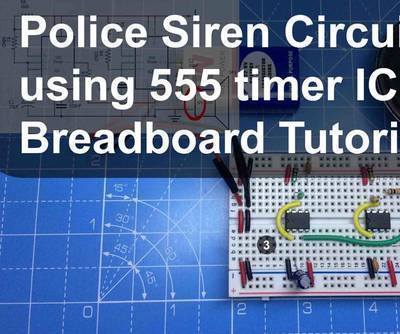
Police Siren Circuit Using 555 Timer IC
_"We are going to make a Police Siren Circuit using two 555 timer IC. The circuit will produce an up-down wailing sound from the speaker. We will be using two 555 timer IC, so the circuit will be bit complex to make. We will fire first 555 is wired as a low frequency oscillator to control the voltage control pin 5 of the second 555. The voltage shift on pin 5 makes the frequency of the second oscillator to rise and fall. I will explain each step in detail with step wise execution and instructions of the circuit. [...]

Picoduino Password Keeper (PPK)
"This is a password auto typer based on Picoduino. Picoduino is an Attiny85 board, similar to digispark but it has a couple of bells and whistles. For example it has a pushbutton which can be used as reset or (in our case) a user input button, and an RGB led! Also, like the digispark, it gets detected as an HID device (keyboard or mouse) which is exactly what we are going to take advantage of! It makes using complex passwords and keeping them in hand effortless. " [...]
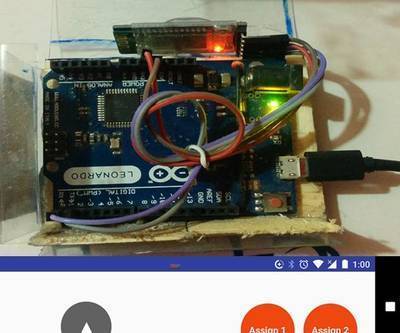
Android Arduino Bluetooth PC Game Controller
"This instructable is show You How to make Android Arduino PC Game Controller . Android Arduino PC Game Controller is One Kind of Android Application Based Embedded System. An Android Application which is developed by Me Name "ArduCon" can Interacts with This System. The ArduCon Send value to the HC-05 Bluetooth Module and Arduino Leonardo Process This Value as Keyboard Instructions because Arduino Leonardo Have Keyboard,Mouse Emulation. " [...]
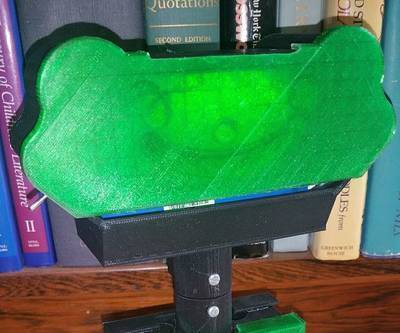
3D Printed R/C Telepresence Balancing Bot
_"Why "Be Here Now" when you can "Be There Now"? Telepresence, allowing you to experience another place, is a fun kind of "out of body" experience that is more and more affordable these days. This project started out building "Your Arduino Balancing Robot", a cool little balancing robot using stepper motors described at http://www.brokking.net/yabr_main.html. It is a nice design around an Arduino Uno, with a RF remote built around a WII nunchuch controller. They built it into a wooden case, but the 3D printing addict in me cried out for a printed case so I hit Sketchup and did a case with a head, and a remote case for the controller. It worked great - nice balance, very maneuverable and steady. [...]
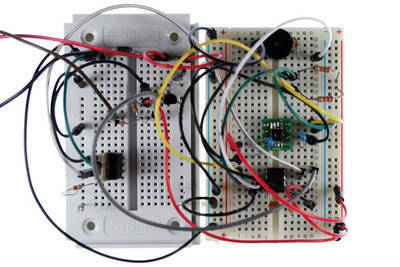
Build a Temperature and/or Humidity Controlled Fan with a Picaxe 08M2 Microcontroller
_"A Picaxe 08M2 microcontroller and an HIH6030 sensor team up to easily control a ventilation fan using temperature or humidity or both. We use a ventilation fan when we want to move air. Sometimes we want to move air for exhaust (such as a kitchen fan clearing cooking odors away) or to bring in cooler air (such as a PC fan to reduce internal component temperatures) or to move moist air away (such as a bathroom fan). Fans can be controlled manually with a simple on/off switch and we can also automate their use. In this project, we build an automated fan that is controlled by a user temperature setting, a user humidity setting, or both. Circuit Schematic To build the project, we construct a circuit that uses a Picaxe 08M2 microcontroller to read a Honeywell HIH6030 temperature and humidity sensor. [...]
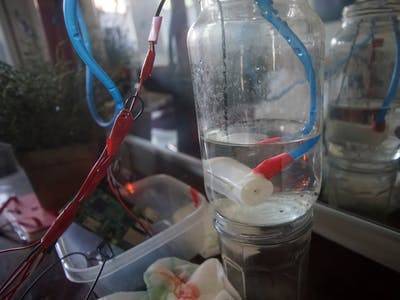
Raspberry Pi Automated Plant Watering with Website
_"Set up your Pi to automatically take care of a house plant by reading a moisture sensor and watering when needed. This post starts with two facts: I have a penchant for killing plants. People in Holland grow things really well indoors. After reading about how well things can grow indoors, I started thinking that maybe automation was my path to healthy plants. So I decided to build the bare minimum - get a plant, a pump, and a water sensor. When the water sensor says "no water here", use the pump to put water there. [...]
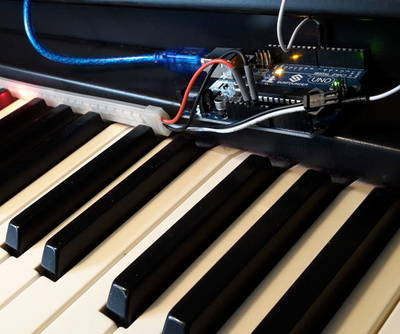
MuseScore+Arduino+LEDs+MIDI = Piano Tutor
"This article explains how to turn your MIDI-capable keyboard or digital piano into a full piano learning & tutoring system, i.e., an interactive lighted keyboard/piano, based on the open-source MuseScore sheet music editor & player, a common Arduino board and a LED stripe. The system will let you practice a piano piece on the keyboard without any need for reading sheet music: just load any MIDI file on MuseScore, play it activating the Piano Tutor function, and then follow the LEDs lighting up on the stripe deployed along your keyboard, repeating as many times as needed. " [...]

Home Hidroneumatic Controlled by ESP8266 + MQTT + Web App
_"Home hidroneumatic, pumps and valves controlled by ESP8266 using MQTT, Html Web App and Cayenne. Overview Motivated by the constant lack of water supply in my city I have been forced to install a water tank that feeds a hidroneumatic so as to have water with enough pressure for the whole house. Additional needs to install a pump for the rapid filling of the main tank at times when the water arrives with very little pressure. This project allows controlling: Turn On/Off hidroneumatic pump. Fill water tank using a litle pump until full sensor detects full tank and stop pump. Fill water tank with water came from street when the pressure helps, until full sensor detects full tank and close the solenoid valve. [...]

Micro:bit with Arduino
_"Did you know that the Arduino IDE can be used to program the micro:bit? Now you have yet another way to use this cool board! Learn how to set up Arduino to program your micro:bit, blink some LEDs, read the internal temperature sensor, send and receive data over Bluetooth - even log data to Adafruit.IO! The micro:bit is a small nRF51-powered learning platform for kids - you can use it with Microsoft MakeCode (drag-n-drop block programming or Javascript), micropython, or mbed. But we really like using the Arduino IDE, especially since there's thousands of existing projects you can use and adapt. Also, you get to have much more advanced projects since you won't run out of memory (as you would with micropython) and you can write just about any code you want (with MakeCode you are more constrained to what has already been provided for you, a trade-off for ease-of-use). [...]
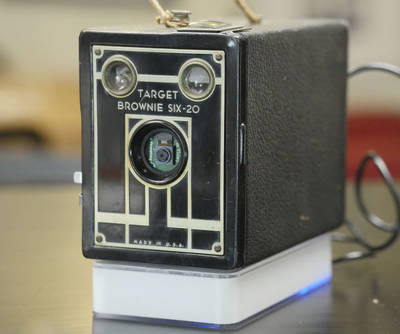
Retro Raspberry Pi Tumblr GIF Camera
_"I wanted a way to use my vintage cameras in a new, digital way. I have a few kicking around in various conditions, but haven't used them in ages because the film is costly to develop. Follow along with this Instructable to see how I put a Raspberry Pi and Pi Camera inside a retro film camera, and programmed it to upload GIFs to my Tumblr. The code is based on Lara's free Instructables Raspberry Pi Class, which contains valuable background info if you're new to electronics, programming, or the Pi. The same code can be used to run a photo booth at your next party! I chose to take my camera mobile with a big battery pack to capture GIFs at Maker Faire NY this year. [...]
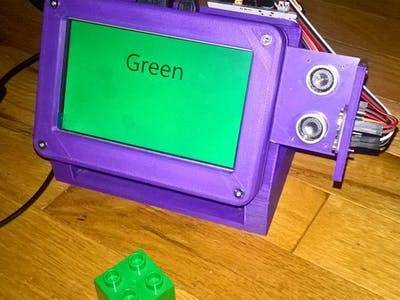
See Colors with the Adafruit TCS34725, an Arduino and a Pi 3
"This toy project uses the TCS34725 to read the color of Lego bricks, and uses a Raspberry Pi UWP C# application to say the color. I recently bought the Adafruit TCS34725 breakout board, which senses colors, and I wanted to build a project to kick the tires. The most colorful thing that I know of my our house is my baby daughter's box of Lego. I thought it would be a nice test of the hardware to check if it could recognise the colors, and if I could use the color information with my Raspberry Pi to say what colors that the TCS34725 breakout board sees. " [...]
Pedal Pi Controller with Circuit Playground
_"A controller to change effects scripts on the Pedal Pi using a Circuit Playground Express board. The Pedal Pi is an open source guitar pedal that uses a Raspberry Pi Zero running Raspbian Lite to run C scripts of digital effects to play around with. It's made by Electro-Smash, an open source hardware company out of the UK. They have some other open source guitar pedals as well, based on Arduino boards but this is their first step into the magical world of Raspberry Pi. They have their own packaged ISO of Raspbian Jessie Lite that includes their self-written effects scripts so that you can change effects via the terminal, since the Lite distro does not have a GUI (of course you can use a version of Raspbian w/ a GUI if that's more your style, but personally for this application I think sans-GUI is the way to go). The only thing that I eventually found to be a bit awkward with the pedal was the act of changing effects. [...]
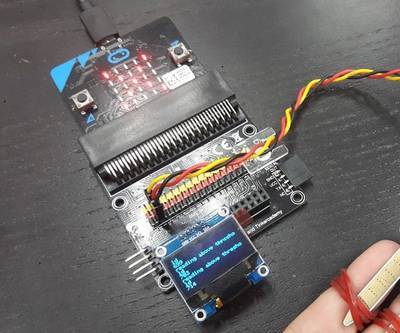
Make a Lie Detector Machine With ElecFreaks Micro:bit Tinker Kit
_"With this machine, the truth will never escape you! As long as you can make your subject hold a moisture sensor for a while. This tutorial was contributed by Samuel Ong from Raffles Institution. In this project, we will create a simple lie detector machine, which works by measuring the electrical conductivity of our skin. Upon feeling nervous, our skin's electrical conductivity will increase, and the moisture sensor can pick up on that. This allows us to determine if a person is telling the truth or not. [...]
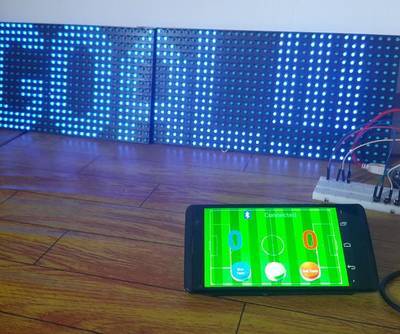
Score Board Project Using DMD
"Often we meet in a soccer stadium, there is a giant LED board that serves as a scoreboard. So also in other sports field, also often we know the scoreboard of the display screen made of LED. Although not possible, there is also a field that still uses a manual board. In this project, we create a scoreboard using Dot-matrix Display using Bluetooth-based Android Smartphone as the controller. " [...]
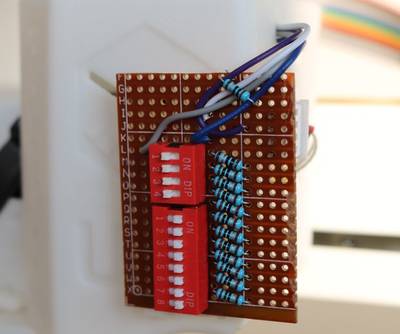
Up Plus 2 Temperature Control
_"For about two years I own an Up Plus 2 3D printer. I've won this printer in the Instructable 3D printing contest, after building a LEGO 3d printer. The UP plus 2 3D printer is a so called "plug and play" type. It's easy to use, and has a low failure rate. And I have to say I am very pleased with this printer. But this printer also comes with some disadvantages. [...]
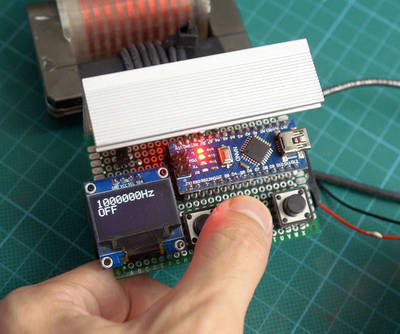
Variable Frequency Arduino Generator
"Hello everyone, this is project How-ToDo. Since some of you asked to show in detail my variable frequency arduino generator for high voltage power supply, here it is. " [...]
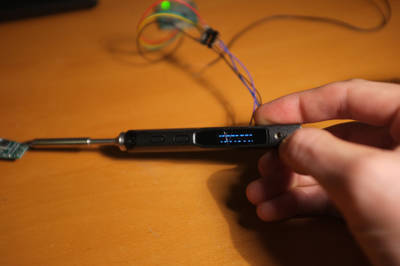
TS100 Oscilloscope hack
_"This post describes my modification of a TS100 soldering iron that transforms it into an oscilloscope. The changes are mostly made in software. Readers of my blog will know that I have a weakness for modifying things to serve a purpose they never have been designed for. And admittedly, this project is one of the most stupid/nicest projects I’ve done recently. Why stupid? Well, I transformed a soldering iron into an oscilloscope… see for yourself. [...]
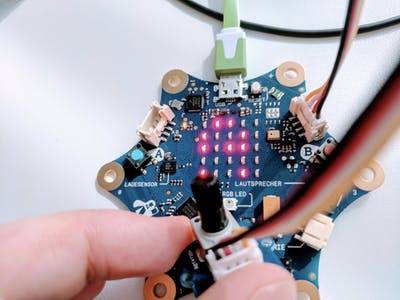
Calliope Messenger
_"This post describes how two calliope minis can be used to create a wireless messenger using the built-in radio. This project was created for the SAP Hybris Steam Kids program, a program dedicated to encourage digital literacy and to promote coding skills at school. We have chosen to use the Calliope Mini and provide a step-by step guide which is suitable for classroom use. Using two calliopes and one potentiometer, you can easily create your own little messenger. Of course it will require both calliope mini to be somewhat close to each other so the radios can transmit and receive, but it easily work over a few meters and definitely within the classroom. There are many ways to extend and change this project, so feel free to drop me a line via twitter (@hansamann) in case you do. [...]

I hacked a Roomba to become a 360° FPV telepresence robot
_"I hacked a Roomba vacuum to become a telepresence robot. Buying a telepresence robot is usually pretty expensive, and all you can do is drive a video chat on a moving platform. I believe that an ideal telepresence experience should be much more immersive! Why can't we have a 360° view like real-life and use some of our body's actual gestures. But more than that, to be able share music videos or even clean rooms! It is going to be so much fun. [...]
That's all Folks!


